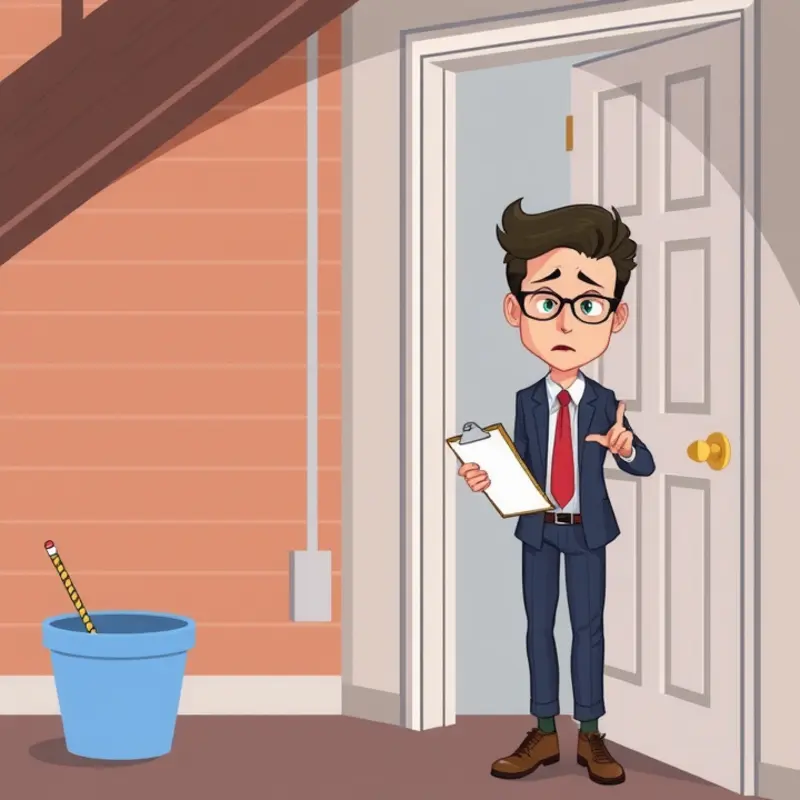Living in an apartment can be like embarking on a thrilling new adventure, complete with unexpected plot twists—like finding out that your upstairs neighbor has a secret passion for late-night tap dancing. For young adults and families entering the rental market, noise can easily become one of the more surprising challenges of apartment life. You think you’re signing up for a cozy nest, and suddenly you’re sharing your space with someone who appears unable to operate on anything less than full volume. Whether it’s the sound of enthusiastic children running about, a lively (and notably loud) party next door, or the intimate details of a neighbor’s phone call that you wish you could ‘unhear,’ managing noise issues is a critical part of making your apartment feel like home. This guide will cover effective solutions, cover your rights as a renter, and sprinkle in some humor to keep you sane while you navigate these sound-filled challenges.
Is that a DJ Turntable or Your Neighbor?

Living in an apartment can sometimes feel like sharing a space with an aspiring DJ, even if music isn’t on the playlist. From booming bass lines to clattering footsteps, noise can infiltrate your peaceful abode in unexpected ways. Luckily, soundproofing your apartment doesn’t require a massive budget or expertise in acoustic engineering.
Even though some noises are hard to pin down, like that mysterious whirring that sounds oddly like a helicopter, most common sources of noise pollution in apartments are straightforward. Footsteps, dragging furniture, voices, and music are frequent offenders. Sometimes, it might feel like your ceiling is the stage of a lively tap dance routine.
Let’s tackle these noise nuisances, starting with soft furnishings. Adding rugs, particularly thick, plush ones, can drastically dampen sound. Consider layering rugs over problem areas to stifle noise from below. Similarly, heavy curtains or blackout drapes can absorb sound waves, reducing outside noise from invading through windows.
Furniture placement offers another opportunity to buffer against noise. Bookshelves, laden with tomes, make excellent sound barriers when placed against shared walls. In essence, your collection of detective novels can do double duty as a crime-stopper for noise. Adding extra-soft throw pillows to sofas and chairs helps absorb sound in the living space, creating a cozy and quieter environment.
Door sweeps and weatherstripping aren’t just for cold drafts—they can also keep noise out. By sealing gaps under doors and around windows, you can create an effective noise buffer. Acoustic panels or foam tiles can also offer a cheap yet effective solution. While they might conjure images of a music studio, these can be surprisingly stylish additions to your decor.
Don’t forget the wonders of simple fixes like rearranging your decor. Sometimes, just shifting your bed or sofa away from shared walls can make a drastic impact on the noise levels you experience. Look into quieter, busier activities like apartment-friendly composting here that can provide a pleasant reprieve from your noise stresses.
For those willing to take their fight against noise pollution up a notch, investing a bit of time and effort into DIY projects can yield spectacular results. Apply acoustical caulk or create a doorway curtain to muffle hallway chatter and echoes. With these straightforward techniques, you might just transform your apartment from a cacophony of clamor into a sea of serenity without reaching a breaking point. And while samurai swords and ninja stars won’t be necessary, a good pair of earplugs never hurts for those unexpected DJ nights from next door.
When to Speak Up: Dealing with Nosy Noise

Navigating the shared space of apartment living can sometimes feel like a delicate art—especially when noise disrupts your sanctuary. Effectively addressing noise issues begins with choosing the right moment to speak up. Timing and approach are critical, as is the ability to assess when informal conversations could resolve disruptions or when to escalate matters to your landlord.
Strategies for Direct Conversations
Before approaching your neighbor, consider the timing and your mood. Initiating a conversation when you’re calm is essential. Knock on their door during a reasonable hour; the middle of their two-hour drumming session might not be the best timing. Open with a friendly greeting and clearly express your concerns in a non-confrontational way: “Hi, I’m your neighbor from downstairs. I wanted to talk about the noise levels that have been quite noticeable in my apartment.”
Using “I” statements can help to express your feelings without laying blame, such as, “I find it challenging to relax after work due to the noise.” This frames the issue as a shared problem rather than a personal attack.
When to Engage Your Landlord
If the noise persists, it’s time to bring it to your landlord’s attention. Communicate your attempts to resolve the issue directly. Document the noise disturbances meticulously. Keep a log detailing dates, times, and the nature of the noise. This will support your case when discussing with building management or a landlord.
When reaching out, frame your communication diplomatically: “I enjoy the community here but have faced challenges with noise. I’ve attempted resolution with my neighbor without success. Could we explore additional solutions?” This invites cooperation rather than conflict.
Assessing and Documenting Noise
Documentation is not just about voicing your concerns but protecting your rights. Record loud incidents when possible, but ensure it’s done discreetly. Many smartphones have tools that measure decibel levels, which can help provide objective data. However, remember local privacy laws when using such technology.
In cases where noise issues impact your health or safety, landlords may be legally required to take action. Check local noise ordinances and tenant rights for guidance on what constitutes reasonable noise levels. Reporting unsafe apartment conditions may further assist in validating your concerns.
While it may seem daunting initially, know that pleasant yet firm communication can often yield surprising outcomes. Being respectful, practical, and prepared encourages resolution and maintains harmony within your shared living environment.
Final words
Noise is often an unwelcome companion in the apartment rental journey, but with a sense of humor and proactive strategies, you can find solace amid the chaos. Every apartment has its quirks and surprises; recognizing that noise comes with the territory is the first step toward making your space truly yours. Armed with soundproofing tips and effective communication skills, you’re ready to tackle neighborhood symphonies, party anthems, and all sorts of unexpected soundtracks. Remember, it’s all part of the urban charm!









